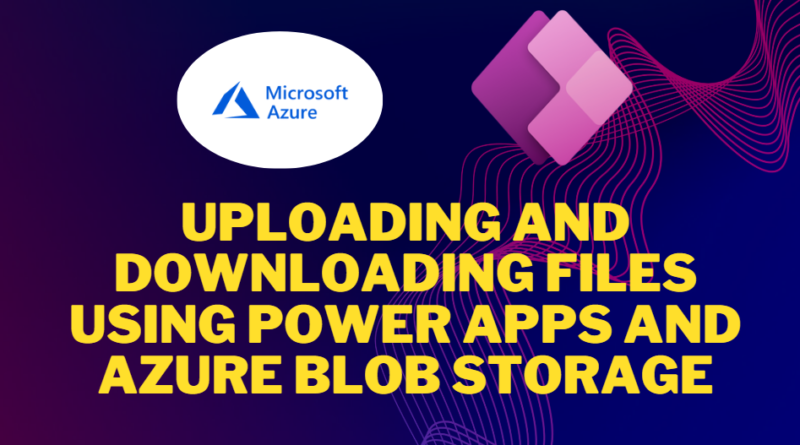Uploading and downloading files using Power Apps and Azure Blob Storage
Uploading and downloading files using Power Apps and Azure Blob Storage allows users to easily manage and retrieve files within their applications. Here’s a step-by-step guide on how to implement this functionality:
Step 1: Set up Azure Blob Storage Before proceeding, make sure you have set up Azure Blob Storage following the steps mentioned earlier in this document. Create a storage account and container within Azure Blob Storage to store the uploaded files.
Step 2: Create a new Power App or open an existing one To begin, open Power Apps in the browser or the Power Apps studio on your desktop. You can choose to create a new app from scratch or open an existing app where you want to add the file upload and download functionality.
Step 3: Add the Azure Blob Storage connector In the Power Apps studio, navigate to the “Data” tab and click on the “Add data source” button. From the list of available connectors, select the “Azure Blob Storage” connector. This will add the connector to your app, allowing you to interact with Azure Blob Storage.
Step 4: Configure the Azure Blob Storage connector After adding the Azure Blob Storage connector, you need to configure it with the connection string obtained from your Azure Blob Storage account. In the connector settings, enter the storage account name, access key, and container name you created in Azure Blob Storage. Save the configuration.
Step 5: Design the app interface Next, design the interface of your Power App to include the necessary elements for file upload and download. For example, you can add a file upload button and a gallery to display the uploaded files.
Step 6: Implement file upload functionality To enable file upload, associate the file upload button with an action. In Power Apps, you can use the “Patch” function to upload files to Azure Blob Storage. Configure the file upload button to trigger the Patch function and specify the target container, file name, and file content. You can access the file content using the “AddPicture” function or any other method appropriate for your use case. Upon clicking the upload button, the file will be uploaded to Azure Blob Storage.
Step 7: Implement file download functionality To enable file download, use a gallery control to display the list of uploaded files. Configure the gallery to retrieve the file names and display them. Next, add a download button within the gallery for each file. Associate the download button with an action to retrieve the file from Azure Blob Storage. Use the “Launch” function along with the Azure Blob Storage connector to download the file by providing the appropriate URL or path.
Step 8: Test the functionality After implementing the file upload and download functionality, it’s crucial to thoroughly test the app. Run the Power App and verify that you can successfully upload files to Azure Blob Storage and download them back to your device. Test various scenarios, such as uploading different file types and sizes, to ensure the functionality works as expected.
Step 9: Publish and share the Power App Once you are satisfied with the file upload and download functionality, publish and share the Power App with your intended audience. Select the appropriate environment for deployment, such as the Power Apps portal or a mobile device, and follow the publishing steps provided by Power Apps.
In conclusion, integrating Power Apps with Azure Blob Storage allows users to upload and download files seamlessly within their applications. By following the steps outlined above, users can leverage the power of Power Apps and Azure Blob Storage to create efficient and user-friendly file management solutions.




